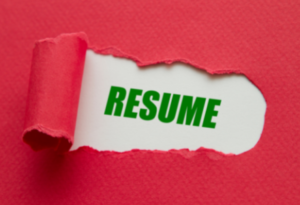INSIDE THE 
NEWS + ADVICE
When You Design Your Resume Avoid These 6 Things

Please don’t try to stand out by using graphics, tables, colorful type or pictures when you design your resume.
Being straightforward and easy-to-read is what makes your resume stand out, along with accomplishments that are relevant to the position you’re applying for.
We’ve seen a large number of over-designed resumes over the past year. We even see people put their pictures on resumes. Don’t do it—it’s viewed as unprofessional, and because of possible bias it’s not common in the U.S. unless you’re an actor or a model.
Recruiters will initially scan your resume quickly to determine whether or not it merits a deeper dive. You want the most important elements to stand out, and easily catch their attention. That’s why it’s critical to be pleasing to the eye and easy to scan. So the simpler it is, the better it is. Avoid fancy or colorful fonts, certification completion images, and dense paragraphs without white space when you design your resume.
If recruiters struggle to quickly see your accomplishments, you’re in trouble.
Format for Applicant Tracking Systems
At some point your resume will be uploaded to an employer’s applicant tracking system (ATS). That’s whether a recruiter saves your resume from ClearedJobs.Net, you hand it to a company rep at a Cleared Job Fair, you apply online, or you email your resume to a recruiter. It will eventually end up in an ATS, so assume that paper resume you hand over will be scanned.
The best digital format for your resume is still a Word document, not a PDF. Some ATS struggle with PDFs and many PDF resumes are very large files. That can be due to images, the use of color, or because the file wasn’t downsized when saving. If you do save your resume as a PDF, make sure it’s searchable.
Avoid These Resume Don’ts
The biggest formatting issues we regularly see that you should avoid when you design your resume include:
1. Highlighting text in pink, light blue or other colors. Some colors do not scan well so the safe choice is always black. And again, colors also make the file size larger.
2. Shading sections of text. Shading makes text more difficult to read and it can be difficult for a scanner to read properly too. Anything a scanner can’t read will essentially be deleted or missing from your resume.
3. Tiny type. Sure a recruiter can zoom in to read your small typestyle, but the goal is to make their job easier, not more difficult!
4. Certification completion images. Please avoid these images. Include certs that are relevant to the job you’re applying for as text in a skills list at the top of your resume.
5. No white space between paragraphs or bullets. Tight, dense text is hard to read and buries your relevant accomplishments.
6. Your picture. Unless you’re a model or actor, never include your picture on your resume. Recruiters are very wary of bias issues and your resume may immediately be discarded if your picture is included.
Bonus Tip: Double-check for typos. When a recruiter submits you as a potential candidate for a position and sends your resume to a hiring manager, it’s a reflection on them too. So take extra care to ensure your resume is free of grammatical errors.
Your resume is an ad designed to get you an interview. That’s it. It needs to be pleasing to the eye, and easily communicate how you meet the employer’s needs.
Have a question about your resume? Join us at one of our upcoming Cleared Job Fairs and take advantage of the Resume Review sessions. In the meantime, you can read more tips about crafting your cleared resume.
This entry was posted on Monday, June 28, 2021 3:53 pm